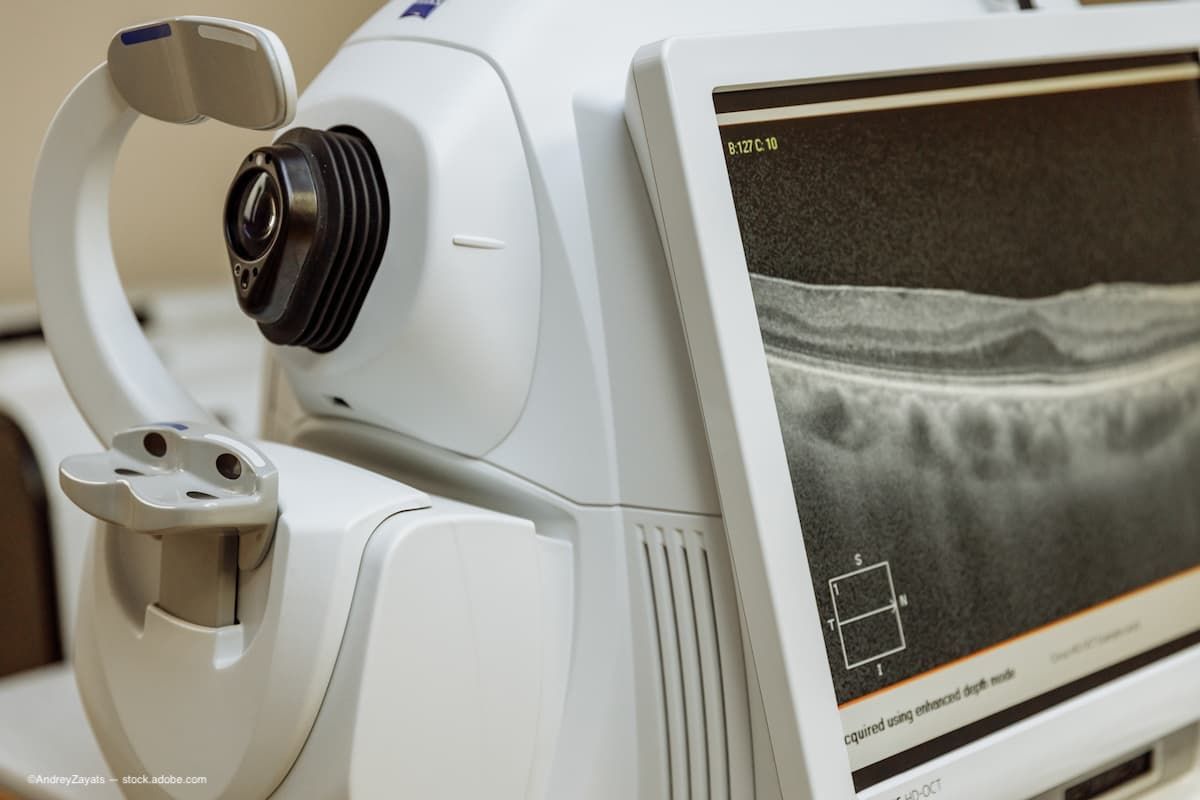News
Article
OCT proves valuable for detecting macular pathologies in patients with scleritis
Author(s):
Hungarian investigators reported the beneficial use of optical coherence tomography (OCT) for detecting macular pathologies in patients with scleritis.
(Image Credit: AdobeStock/AndreyZayats)

Hungarian investigators reported the beneficial use of optical coherence tomography (OCT) for detecting macular pathologies in patients with scleritis.1 Lilla Smeller, MD, Edit Toth-Molnar, MD, and Nicolette Sohar, MD, are from the Department of Ophthalmology, University of Szeged, Szeged, Hungary.
“OCT is a painless method for examining the details of the ocular structures in vivo with high resolution that has revolutionized patient care for following and treating scleritis patients,” the investigators commented.
Twenty-four patients (17 females, 7 males; 27 eyes) with scleritis were included in the study, all of whom had undergone ophthalmologic examination that included measurements of visual acuity and intraocular pressure, slit-lamp and ophthalmoscopic examinations, and spectral-domain OCT (Spectralis, Heidelberg Engineering).
The aims of this study were to investigate patients with scleritis using basic ophthalmologic examination methods and OCT both to identify any macular complications and determine whether the macular complications affect the prognosis and treatment and serve as biomarkers since previously, the macula was not examined in patients with scleritis.
OCT results
The OCT images showed epiretinal membranes (ERM) in 3 cases (12%), cystoid macular edema (CME) in 3 three cases (12%), diffuse macular edema (DME) in 1 case (4%), and serous retinal detachment (SRD) in 1 case (4%).
In commenting on the image findings, the investigators concluded, “…besides treating scleritis patients, the examination of their macula by OCT is also very important for detecting any macular complications caused by inflammation, since CME is the leading cause of decreased vision. ERMs are also associated with poor vision. Macular pathologies seen on OCT can modify the management of scleritis.”
They continued, “OCT plays an important role in measuring inflammatory activity, determining the severity of inflammation, choosing the best treatment, the response to treatment, and avoiding legal blindness. Biomarkers on OCT in scleritic patients, such as CME, DME, SRD, and ERM, are also very useful in order to find the right diagnosis and treatment in time.”
Reference:
Smeller L, Toth-Molnar E, Sohar N. Optical coherence tomography: focus on the pathology of macula in scleritis patients. J Clin Med. 2023;12:4825; https://doi.org/10.3390/jcm12144825
Newsletter
Don’t miss out—get Ophthalmology Times updates on the latest clinical advancements and expert interviews, straight to your inbox.





